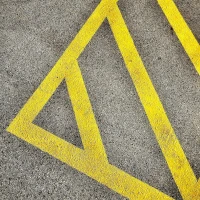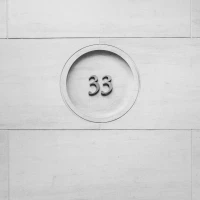Are you ready to take your diving to the next level? Dive into the world of freediving and unlock a whole new set of techniques that will enhance your diving experience. Freediving, also known as breath-hold diving, allows you to explore the underwater world with simplicity and grace. In this article, we will explore 33+ freediving techniques that will help you dive deeper and stay underwater longer. From proper breathing techniques to equalization methods and safety guidelines, we’ve got you covered. So, let’s dive in and discover the secrets of becoming a skilled freediver.
Table of Contents
- Introduction to Freediving
- Essential Freediving Equipment
- Breathing Techniques for Freediving
- Equalization Methods for Freediving
- Safety Guidelines for Freediving
- Advanced Freediving Techniques
- Training and Preparation
- Conclusion
Introduction to Freediving
Freediving is an ancient practice that dates back thousands of years and can be traced to various cultures around the world. It involves diving underwater without the assistance of breathing apparatus such as scuba gear. Instead, freedivers rely on their lung capacity, proper breathing techniques, and efficient body movements to explore the depths.
Freediving offers a unique experience that allows divers to connect with nature in a way that is both peaceful and exhilarating. Whether you are a beginner looking to explore the underwater world or an experienced diver seeking new challenges, freediving is a sport that can be enjoyed by all.
Essential Freediving Equipment
Before diving into the techniques, it’s important to have the right equipment to ensure your safety and comfort during your freediving sessions. Here are the essential pieces of freediving equipment you’ll need:
- Mask: A well-fitting mask with a low volume is crucial for freediving. It should provide a clear field of vision and a comfortable seal.
- Snorkel: A snorkel allows you to breathe at the surface without lifting your head out of the water. Opt for a streamlined snorkel to reduce drag.
- Fins: Freediving fins are longer and more flexible than regular snorkeling or scuba diving fins. They help you move efficiently through the water.
- Wetsuit: A wetsuit helps maintain body temperature and provides buoyancy. Choose a wetsuit appropriate for the water temperature you’ll be diving in.
- Weight Belt: A weight belt is used to counterbalance the buoyancy of the wetsuit. It allows you to achieve neutral buoyancy underwater.
- Dive Watch/Computer: A dive watch or computer helps you keep track of your dive time and depth. Some models also provide useful data such as heart rate and oxygen levels.
Investing in good-quality equipment that fits properly is essential for a safe and enjoyable freediving experience. Now that you have the right gear, let’s dive deeper into the techniques that will enhance your diving experience.
Breathing Techniques for Freediving
Proper breathing plays a crucial role in freediving. It helps oxygenate your body, reduce anxiety, and prepare you for the dive. Here are some breathing techniques that will improve your freediving abilities:
Diaphragmatic Breathing
Diaphragmatic breathing, also known as belly breathing, is a technique that engages the diaphragm and encourages full expansion of the lungs. To practice diaphragmatic breathing:
- Find a comfortable sitting or lying position.
- Place one hand on your chest and the other on your belly.
- Inhale deeply through your nose, allowing your belly to rise as you fill your lungs with air.
- Exhale slowly through your mouth, emptying your lungs completely.
- Repeat this process, focusing on deep, slow breaths that originate from your diaphragm.
Diaphragmatic breathing improves lung capacity, enhances oxygen exchange, and helps you relax before a dive.
Static Apnea Training
Static apnea training involves holding your breath for an extended period while staying stationary. It helps increase your breath-holding ability and prepares your body for longer dives. Here’s how you can practice static apnea training:
- Find a quiet and comfortable place to practice.
- Take a deep breath and hold it for as long as you can.
- Focus on relaxation and stay still during the breath-hold.
- When you can no longer hold your breath, exhale slowly and recover.
Start with shorter breath-holds and gradually increase the duration as you progress. Remember to always practice static apnea training under supervision and in a safe environment.
CO2 and O2 Tables
CO2 and O2 tables are designed to train your body to tolerate higher levels of carbon dioxide and lower levels of oxygen. These tables involve alternating periods of breath-holding and recovery breathing. Here’s an example of a CO2 and O2 table:
-
CO2 Table:
- Hold breath for 1 minute, exhale, and recover for 1 minute.
- Hold breath for 1 minute 30 seconds, exhale, and recover for 1 minute.
- Continue increasing the breath-hold duration and recovery time until reaching your personal limit.
-
O2 Table:
- Breathe deeply for 1 minute, exhale, and recover for 1 minute.
- Breathe deeply for 1 minute 30 seconds, exhale, and recover for 1 minute.
- Continue increasing the breathing duration and recovery time until reaching your personal limit.
CO2 and O2 tables should be performed under the guidance of a qualified instructor to ensure safety and effectiveness.
Equalization Methods for Freediving
Equalization is the process of equalizing pressure in your ears and sinuses as you descend underwater. It’s crucial for avoiding discomfort and potential injuries. Here are some common equalization techniques used in freediving:
Valsalva Maneuver
The Valsalva maneuver is a widely-used equalization technique that involves pinching your nose shut and blowing gently against it while keeping your mouth closed. This technique helps equalize pressure in your middle ear. To perform the Valsalva maneuver:
- Pinch your nose shut with your thumb and index finger.
- Blow gently against your pinched nose while keeping your mouth closed.
- Feel the pressure equalize in your middle ear.
- Release your nose and continue the descent.
Frenzel Maneuver
The Frenzel maneuver is an advanced equalization technique that involves closing the nasal passages using the back of the tongue while creating pressure with the air in the mouth. This technique allows for more precise control of pressure equalization. Here’s how you can perform the Frenzel maneuver:
- Pinch your nose shut with your thumb and index finger.
- Contract the back of your tongue to close your nasal passages.
- Create pressure with the air in your mouth by moving your jaw slightly forward.
- Feel the pressure equalize in your middle ear.
- Release your nose and continue the descent.
The Frenzel maneuver may take some practice to master, but it can be a valuable technique for deeper dives.
Safety Guidelines for Freediving
While freediving can be an exhilarating experience, safety should always be the top priority. Here are some important safety guidelines to keep in mind:
Never Dive Alone
Always dive with a buddy or under the supervision of a qualified instructor. Having someone watching out for you and ready to assist in case of an emergency is crucial for your safety.
Listen to Your Body
Pay attention to how your body feels before, during, and after a dive. If you experience any discomfort, dizziness, or pain, it’s essential to stop diving immediately and seek medical attention if necessary.
Respect Depth and Time Limits
Be aware of your depth and time limits based on your experience and training. Never push yourself beyond your comfort zone or attempt dives that exceed your capabilities.
Stay Hydrated and Well-Rested
Proper hydration and getting enough rest are essential for optimal performance and safety. Dehydration and fatigue can negatively impact your diving abilities and increase the risk of accidents.
Do Not Hyperventilate
Avoid hyperventilation, which is excessive or rapid breathing before a dive. Hyperventilation can lower the level of carbon dioxide in your body, leading to a false sense of breath-hold capacity and potentially causing blackout underwater.
Be Mindful of Marine Life
Respect marine life and their habitats by not touching, harassing, or disturbing them. Avoid damaging corals or other fragile ecosystems while diving.
Following these safety guidelines will ensure that your freediving adventures are enjoyable and free from unnecessary risks.
Advanced Freediving Techniques
Once you have mastered the basics of freediving, you can explore advanced techniques that will take your diving to new depths. Here are a few advanced freediving techniques:
Variable Weight Diving
Variable weight diving involves using a weighted sled to descend deeper than you would with your own body’s propulsion. This technique allows you to conserve energy and focus on equalization and relaxation during the descent. It requires proper training and should only be attempted under the supervision of a qualified instructor.
No-Limits Diving
No-limits diving is an extreme form of freediving where divers descend and ascend using a weighted sled or balloon. With the help of these devices, divers can reach incredible depths but are not limited by their own energy or propulsion. No-limits diving holds great risks and should only be undertaken by highly experienced and trained freedivers.
Underwater Photography and Videography
Combining freediving with underwater photography or videography can add a whole new dimension to your diving experience. Capturing the beauty of the underwater world and sharing it with others can be a rewarding and creative way to express your passion for the sport.
Advanced techniques require proper training and experience, so it’s important to continue learning and improving your skills under the guidance of qualified instructors.
Training and Preparation
To enhance your diving experience and progress as a freediver, it’s crucial to undergo regular training and preparation. Here are some key training principles to keep in mind:
Physical Fitness
Maintaining good overall physical fitness is important for freediving. Regular exercise, focusing on cardiovascular endurance and core strength, can improve your lung capacity and overall diving performance. Incorporate exercises such as swimming, yoga, and strength training into your routine.
Mental Preparation
Freediving requires mental discipline and focus. Practices such as meditation, visualization, and breath control exercises can help calm the mind, reduce anxiety, and improve concentration during dives.
Technique Development
Working on refining your freediving techniques is essential for progression. Practice regularly, focusing on proper equalization, streamlined body positioning, and efficient finning techniques.
Gradual Progression
Progress in freediving should be gradual and within your comfort zone. Pushing yourself too hard or attempting dives that are beyond your current abilities can lead to accidents and injuries. Work with a qualified instructor who can guide you through the appropriate training progression.
Conclusion
Enhancing your diving experience through freediving techniques opens up a whole new world of possibilities. From improving your breathing and equalization techniques to mastering advanced diving skills, freediving allows you to explore the depths with confidence and grace. Remember to prioritize safety, follow proper training guidelines, and respect the marine environment to ensure lasting enjoyment of this incredible sport. So, what are you waiting for? Dive deeper and embark on an unforgettable freediving journey today!










